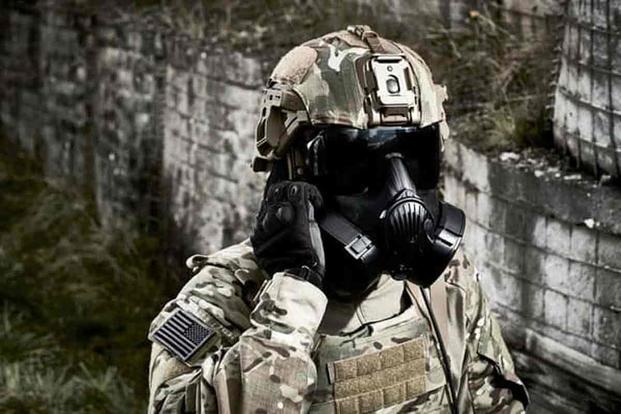The Army has officially started fielding its newest combat helmet, the Next-Generation Integrated Head Protection System, to soldiers in close-combat formations, the service announced Tuesday.
According to service officials, the NG-IHPS will provide soldiers with "increased ballistic and fragmentation protection" in a 40% lighter package compared to the earlier Integrated Head Protection System, which was first fielded in 2018 to replace the Advanced Combat Helmet and Enhanced Combat Helmet.
The first NG-IHPS units were fielded to around 2,000 soldiers assigned to the 1st Brigade Combat Team, 82nd Airborne Division, on Monday, the service said. Army Times was first to report news of the fielding.
The earlier-generation IHPS weighed just three pounds and provided added protection against pistol rounds and fragmentation compared to previous combat helmets, but it required an additional two-pound ballistic applique to provide full protection against small-arms fire. The NG-IHPS will purportedly offer that next level of protection without the additional weight.
"This is world-leading rifle threat protection we're providing to our soldiers," Maj. Matthew Nulk, the assistant program manager of the Program Executive Office Soldier's Head Protection Team, said in the Tuesday press release.
Speaking to Army Times, Head Protection Team lead engineer Alex de Groot attributed enhanced protection of the NG-IHPS to the use of lightweight polyethylene instead of rigid and inflexible Kevlar material in the helmet's construction, with the former dispersing energy on impact rather than shattering like the latter.
The Army has been flaunting a next-gen polyethylene helmet since at least 2018, when researchers showed off a prototype that claimed to offer rifle protection in an astonishingly lightweight 3.25-pound package.
The full NG-IHPS setup consists of a novel retention and suspension system, a helmet cover, and a night-vision bracket that's designed to integrate with a separate mandible protector (which will primarily be fielded to soldiers in mounted formations), along with hearing protection.
"The boltless retention system and night-vision device bracket mount on without compromising the helmet's structural integrity, thus increasing protection," de Groot said in the release.
The helmet's night-vision bracket is also designed to integrate seamlessly with futuristic heads-up displays like the Enhanced Night Vision Goggle-Binocular and Integrated Visual Augmentation System that the Army plans to field widely in the coming years, the service said.
"This fielding marks significant progress for soldier protective equipment as it equips soldiers with protection against relevant battlefield threats, and the innovative helmet design is a purpose-built platform for integration now, and with future soldier-enabling devices," Lt. Col. Ken Elgort, product manager for Soldier Protective Equipment, said in the release.
How the NG-IHPS will hold up in combat, however, remains to be seen. According to the fiscal 2023 assessment of the system from the Pentagon's chief weapons tester, "additional testing" is required "to assess NG-IHPS protection compared to legacy helmets and to assess the degree of potential injuries to warfighters from penetrating threats" to the helmet.
The Army plans on equipping the 82nd Airborne's 2nd and 3rd Brigade Combat Teams with the NG-IHPS this quarter and fielding the helmet across close-combat formations "over the next three years," the service said.
Related: The Army Forced to Change the Name of Its New Rifle












